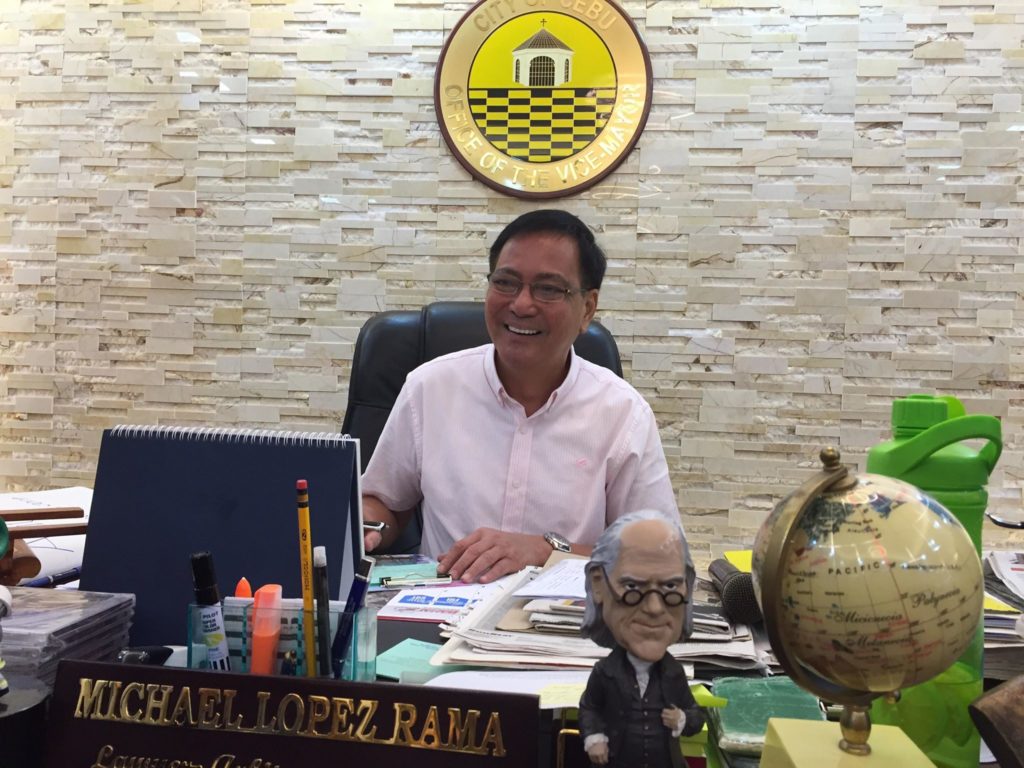Rama questions DPWH flyover projects in Cebu City, saying ‘flyovers are obsolete’

Cebu City Vice Mayor Michael Rama
CEBU CITY, Philippines — Cebu City Vice Mayor Michael Rama questioned the new flyover projects that the Department of Public Works and Highways (DPWH) plans to undertake in the city, saying these might not be the best solutions to the city’s traffic problem.
Rama said that he received a request from DPWH for permission from the City Council to cut trees for the flyover projects at Juan Luna Avenue, Osmeña Boulevard, and Salinas Drive.
The vice mayor said these flyover projects will not solve the worsening traffic situation in the city and will instead gravely affect the cultural value of the city.
“When LRT (lightrailway transit) was built in Manila over EDSA, many of the historical places in there lost its historical value. It is displeasing to look at. By constructing the flyovers in the said area, it will definitely affect the area, which is of cultural significance and forms part of the patrimony of Cebuano heritage and culture,” said Rama.
In October 26, 2011, the Movement for a Livable Cebu (MLC) was commissioned by the DPWH to study alternative sustainable solutions for the worsening traffic conditions of the city. A proposal was presented for a technically redesigned Gorodo Avenue to realize a concept of a livable city.
Rama said that flyovers would significantly affect this design. “I firmly believe that the proper project to be implemented is that aimed toward providing more mobility and access for people as opposed to cars only,” he said.
The vice mayor is particularly worried about the planned flyover at the Juan Luna Avenue covering junctions M.J. Cuenco Avenue and A. Soriano Avenue, since this would affect the facades of two of Cebu’s historic landmarks, the Carmelite Monastery and the San Carlos Seminary.
The Carmelite Monastery, home to Carmelite nuns founded in Cebu in 1949, is not just a refuge to many Catholic faithful, but also famous for being the convent that sheltered the late President Corazon Aquino when the People Power Revolution broke out in 1986.
Read more: The day the Carmelite nuns hid Cory
The compound that now formed part of the San Carlos Seminary, which started as a small mission school in 1595 and became a seminary in the 1700s, was formally built along a neo-classical home design in September 1949 on San Jose de la Montaña (later renamed Pope John Paul II Avenue).
“I honestly believe that flyovers are obsolete and it does not address the traffic situation of the Queen City of the South,” said Rama.
With these concerns, Rama has called on the DPWH to explain these projects before the Cebu City Council.
DPWH officials in Cebu will be required to attend the Citizen’s Hour of the City Council on March 4, 2020 to appraise the council of these projects, revealed Rama, who is also the council’s presiding officer.
The vice mayor stressed that the DPWH could not proceed with these projects without the consent of the city government, as all national projects must get the approval of the concerned local government unit (LGU), especially the Sanggunian.
The council has the right to know why these projects are being implemented in the city, he added. /elb
Disclaimer: The comments uploaded on this site do not necessarily represent or reflect the views of management and owner of Cebudailynews. We reserve the right to exclude comments that we deem to be inconsistent with our editorial standards.
